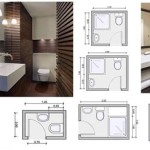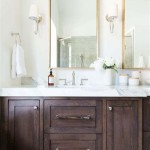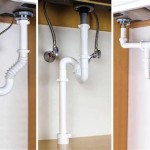Bathroom Vanity Unit With Towel Rail: Functionality and Design
The bathroom vanity unit with a towel rail represents a practical and space-saving solution for modern bathroom design. This combination integrates essential bathroom fixtures into a single unit, optimizing functionality and enhancing the overall aesthetic. Such a unit comprises a vanity cabinet, typically housing a sink and providing storage space, coupled with an integrated or attached towel rail for convenient towel storage and drying. This article explores the various aspects of bathroom vanity units with towel rails, focusing on their design considerations, functional benefits, and key features.
The popularity of these units stems from their ability to address the common challenge of limited bathroom space. In smaller bathrooms, maximizing every square inch is crucial, and a vanity unit with a towel rail allows homeowners to combine two essential functions into one streamlined design. This eliminates the need for separate towel racks or hooks, freeing up valuable wall space and creating a less cluttered environment.
Furthermore, these units contribute to a more cohesive and organized bathroom design. By integrating the towel rail directly into the vanity, the overall look is cleaner and more coordinated. This unified approach can elevate the style of the bathroom and create a more harmonious and inviting atmosphere. The design possibilities are vast, ranging from contemporary minimalist styles to more traditional and ornate designs, allowing homeowners to choose a unit that perfectly complements their existing bathroom décor.
Key Design Considerations
The design of a bathroom vanity unit with a towel rail involves several key considerations, encompassing dimensions, materials, style, and functionality. Careful planning is essential to ensure the chosen unit meets the specific needs and preferences of the homeowner while also fitting seamlessly into the existing bathroom layout.
Firstly, dimensions are paramount. The size of the vanity unit should be carefully considered in relation to the available space. Measuring the bathroom and accurately assessing the area where the unit will be installed is crucial. Factors to consider include the width, depth, and height of the vanity, as well as the size and placement of the sink and towel rail. Sufficient clearance should be ensured around the unit to allow for comfortable movement and access to the sink and storage compartments. Overcrowding should be avoided to maintain the overall functionality and aesthetic appeal of the bathroom.
Material selection plays a significant role in the durability and appearance of the unit. The vanity cabinet is typically constructed from materials such as wood, MDF (Medium-Density Fiberboard), or plywood. Solid wood offers a classic and durable option, while MDF and plywood provide more cost-effective alternatives that can be treated to resist moisture and warping. The countertop can be made from a variety of materials, including granite, marble, quartz, ceramic, or laminate. Each material offers different levels of durability, stain resistance, and aesthetic appeal. The towel rail itself is often made from stainless steel, chrome, or brass, chosen for their rust-resistant properties and ability to withstand frequent use.
Style is another important consideration, as the vanity unit should complement the overall design of the bathroom. Contemporary designs often feature clean lines, minimalist hardware, and sleek surfaces. Traditional designs may incorporate more ornate details, such as raised panel doors, decorative moldings, and antique-style faucets. The color and finish of the vanity unit should also be carefully considered to coordinate with the existing wall color, flooring, and other bathroom fixtures. Neutral colors such as white, gray, and beige are popular choices, as they create a timeless and versatile look. However, bolder colors and finishes can be used to create a more dramatic and personalized effect.
Functionality is also a crucial aspect of the design. The vanity unit should provide ample storage space for toiletries, towels, and other bathroom essentials. Drawers, shelves, and cabinets should be strategically placed to maximize storage capacity and accessibility. The towel rail should be positioned in a convenient location, close to the sink or shower, to allow for easy access to towels. The height of the towel rail should also be considered to ensure comfortable reach for all users. Furthermore, the unit's design should facilitate easy cleaning and maintenance to ensure its longevity and hygiene.
Functional Benefits
The functional benefits of a bathroom vanity unit with a towel rail extend beyond mere space-saving. These units offer a range of advantages that contribute to a more efficient, organized, and enjoyable bathroom experience.
One of the primary benefits is the convenience of having towels readily available near the sink and shower. This eliminates the need to walk across the bathroom wet to retrieve a towel, reducing the risk of slips and falls. The proximity of the towel rail also allows for quick and easy drying of hands and face, promoting good hygiene and preventing the spread of germs. The integrated design ensures the towels are kept neatly organized and readily accessible, rather than being strewn across the countertop or floor.
Another significant benefit is the enhanced organization and storage capabilities. The vanity cabinet provides ample space for storing toiletries, cleaning supplies, and other bathroom essentials. This helps to keep the bathroom clutter-free and organized, creating a more relaxing and inviting atmosphere. The drawers and shelves can be customized to suit individual storage needs, with adjustable configurations to accommodate items of different sizes and shapes. This customizable storage solution ensures the bathroom remains tidy and well-organized, even in smaller spaces.
The integrated design of the towel rail also contributes to improved air circulation around the towels. By allowing the towels to hang freely on the rail, air can circulate more easily, promoting faster drying and preventing the build-up of moisture. This helps to reduce the risk of mold and mildew growth, keeping the towels fresh and hygienic. In contrast, towels that are piled on top of each other or hung over a door may take longer to dry and are more prone to developing unpleasant odors.
Furthermore, these units can contribute to energy savings. Heated towel rails, often integrated into the vanity unit, provide a warm and comfortable towel after a shower or bath. This can reduce the need for using a clothes dryer to dry towels, saving energy and reducing electricity bills. Heated towel rails also help to dry towels more quickly, preventing the build-up of moisture and minimizing the risk of mold and mildew growth.
Key Features to Consider
When selecting a bathroom vanity unit with a towel rail, several key features should be considered to ensure the chosen unit meets individual needs and preferences. These features encompass the towel rail design, storage options, sink type, additional accessories, and overall construction quality.
The towel rail design is an important factor to consider. Options include integrated towel rails, which are built directly into the vanity cabinet, and attached towel rails, which are mounted separately onto the side of the vanity. Integrated towel rails offer a seamless and streamlined look, while attached towel rails provide more flexibility in terms of placement and style. The number of bars on the towel rail should also be considered, depending on the number of towels that need to be accommodated. Heated towel rails are also an option, providing added comfort and convenience. The material and finish of the towel rail should be durable and rust-resistant to withstand frequent use in a humid environment.
Storage options are another important consideration. The vanity cabinet should provide ample storage space for toiletries, cleaning supplies, and other bathroom essentials. Drawers, shelves, and cabinets should be strategically placed to maximize storage capacity and accessibility. Soft-close hinges and drawer slides are desirable features, as they prevent slamming and prolong the lifespan of the unit. Adjustable shelves allow for customization of the storage space to accommodate items of different sizes and shapes. The interior of the cabinet should be easy to clean and maintain to prevent the build-up of dirt and grime.
The sink type is also an important consideration. Options include undermount sinks, which are installed beneath the countertop, and vessel sinks, which sit on top of the countertop. Undermount sinks offer a clean and seamless look, while vessel sinks provide a more decorative and eye-catching element. The size and shape of the sink should be carefully considered in relation to the size of the vanity unit and the available countertop space. The sink material should be durable and stain-resistant, such as ceramic, porcelain, or stainless steel.
Additional accessories can further enhance the functionality and convenience of the vanity unit. These accessories may include built-in lighting, power outlets, and USB ports. Built-in lighting can provide additional illumination for tasks such as shaving and applying makeup. Power outlets allow for convenient charging of electronic devices such as electric toothbrushes and hair dryers. USB ports provide a convenient way to charge smartphones and tablets. Mirrors, either integrated into the vanity unit or mounted separately, are also essential accessories. The style and size of the mirror should complement the overall design of the bathroom.
Finally, the overall construction quality of the vanity unit is crucial. The unit should be made from durable and moisture-resistant materials to withstand the humid bathroom environment. The joints and seams should be tightly sealed to prevent water damage. The hardware, such as hinges and drawer slides, should be of high quality to ensure smooth and reliable operation. The finish should be durable and resistant to scratches and stains. A well-constructed vanity unit will provide years of reliable service and enhance the overall aesthetic of the bathroom.

Industrial Vanity Unit Under Sink Shelf Towel Rail

Dhp Camden 36 Bathroom Vanity Gray With Silver Towel Rack Com

Towel Rail Wash Stand Shelf Washstand Sink Unit Hand Crafted

Serene Valley 24 In Wall Mount Solid Surface Bathroom Sink With Built Towel Bar Matte White Svws604 24wh The Home Depot

Serene Valley 24 In Wall Mount Solid Surface Bathroom Sink With Built Towel Bar Matte White Svws604 24wh The Home Depot

Serene Valley Bathroom Floating Sink 32 Wall Mount With Built I

Modern Style Wall Mounted Hand Wash Vanity Basin Bathroom Sink White Black Marble Cabinet With Towel Rack China Home Furniture Wooden Made In Com

Estra Ash Vanity Unit With Towel Rail By Mobiltesino

Scarabeo 5002 Tb By Nameek S Teorema Rectangular Wall Mounted Ceramic Sink With Polished Chrome Towel Bar Thebath

Modern Style Wall Mounted Hand Wash Vanity Basin Bathroom Sink White Black Marble Cabinet With Towel Rack China Home Furniture Wooden Made In Com
Related Posts







